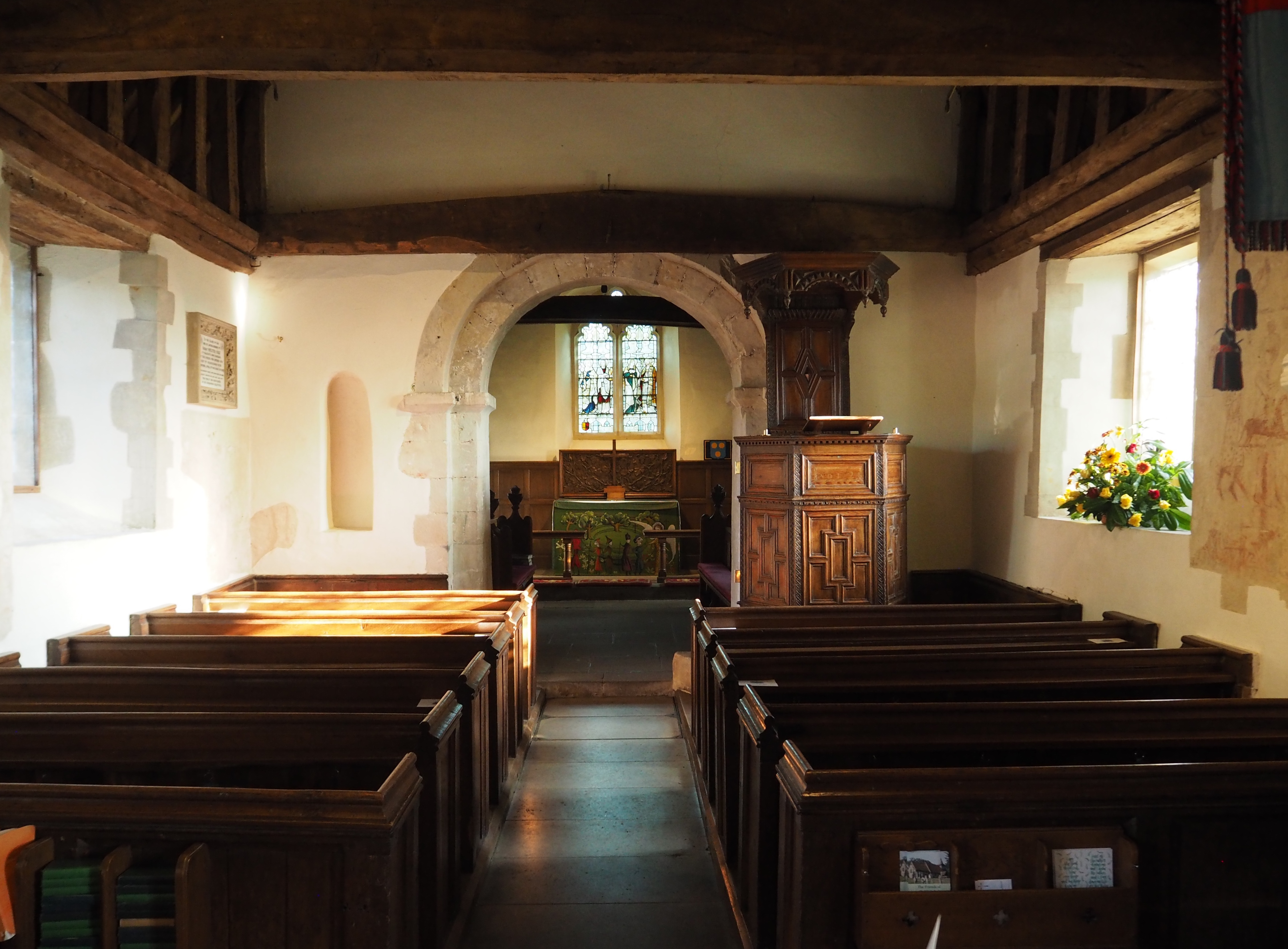Oldgreytravel has a fondness for simple ecclesiastical buildings. They seem to say something about the past that more elaborate edifices fail to. It is not difficult to imagine the simple acts of worship of our peasant forebears when inside one of these simple compact spaces.
It was when visiting the Royal Horticultural Gardens recently, that oldgreytravel was reminded of one just such that he used to visit when working in the area some 20 years ago. Intrigued to see how it had fared over the years, I returned one bright autumn morning. To find it, one must drive past the Royal Horticultural Gardens, past the golf course, past the sewage works and then, within earshot of the M25, lies Wisley village. A scattering of buildings clustered around a tiny and rare church. It’s rarity comes from its survival as a complete building of the Norman period, dating from around 1150. Despite reconstruction of the western half in the C19 and the lack of original furnishings, the church is remarkable for having a substantially unchanged plan form. The vast majority of early churches were extended, reconstructed or adapted in some fundamental manner over the intervening 1000 years as the demands of an increased population, changing fashion or vanity required. Wisley, however, for some reason avoided any such substantial alteration and remains as a rare survivor of a largely unaltered Norman plan form of simple chancel and nave.
Even more surprising, perhaps, is that it is by no means unique within the County. Indeed, within a few miles and in the same parish is the equally tiny St Nicholas in the small hamlet of Pyrford. Again, an unaltered Norman composition of chancel and nave, but without the rather harsh limewash render of Wisley. St Nicholas has more significant survivals inside, including a rare early wall painting depicting armed horseman, very much in the style of the Bayeux tapestry and considered contemporary with the church’s construction in the mid C12. The third Norman survivor is at Farleigh near Croydon.

One of the oddities is how these three tiny churches managed to survive, largely unaltered, in this most populous County. One reason must be that much of Surrey was heavily forested and lightly populated during the Middle Ages and there was little development during this time. However, the County saw a huge population explosion in the Victorian period leading to a massive programme of church building, extension and alteration. Nearly every church in Surrey underwent substantial remodelling during this period, so it is an enduring mystery how these three tiny churches survived. One can only assume that the relatively secluded location of these churches in tiny villages that underwent little expansion during the Victorian building boom ensured their survival. Certainly none of them were near railway stations which were the main stimulus to Victorian growth in the County and therefore may just simply have been entirely sufficient for their small congregations. More recently, the gradual introduction of planning and historic building controls would have prevented significant expansion of these villages, all of which sit within the Metropolitan Green Belt.
Perhaps, even more of a mystery is how these churches are so unknown by the general public as well as informed commentators. Simon Jenkins in his exhaustive England’s Thousand Best Churches, while admiring the tiny Sussex Downland churches, does not even mention their Surrey equivalents. Indeed, he is most sniffy about Surrey’s churches altogether, describing them as the least exciting of any English County. However, perhaps it is right that they are so overlooked, for if history and the passage of time had not looked the other way, then these remarkable survivals may not be with us at all.